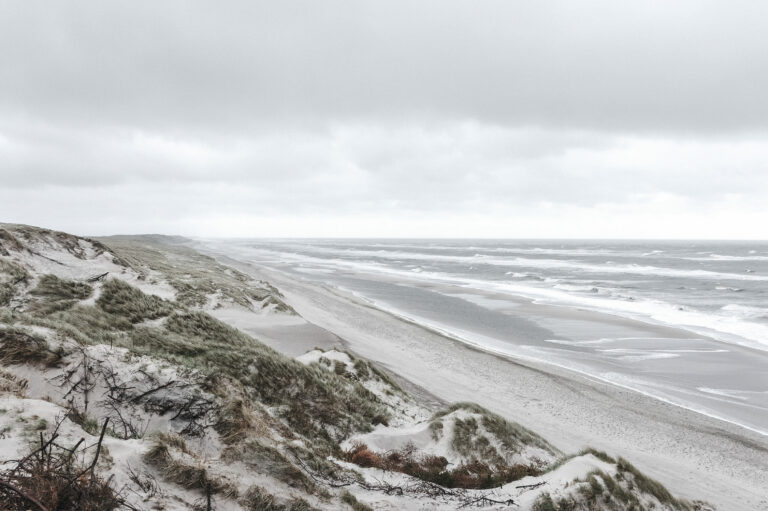Territories of Entanglement

COAST studio reveals how framing the Danish coast makes it possible to identify the challenges that coastal societies and planners are facing.
In topos 104 Rasmus Hjortshøj from the architectural research and photography studio COAST writes about the challenges of the Danish coast – challenges that coastal societies and planners are facing in the present and displays the corresponding images of the “Border” photo project:
The territories of the Anthropocene are territories defined by their entanglements, where that which is perceived as being natural, is often a construct of mankind and that which clearly is man-made, is always rooted in a natural context.
Denmark is such an Anthropocene territory. A small island nation in the Nordic region with one of the longest coastlines in the world in relation to its land area, and with never more than 50 km to the nearest seaboard from any point in the country. An anthropogenic territory if any, with 62 percent of the land area covered by agriculture, 20 percent by buildup area and arguably in a complete lack of any true wilderness. Here natural formations have been levelled for agriculture and watersheds reclaimed to landmass to form basis for cityscapes. The urban centers and rural communities and the natural areas in between, seem to blend together into an all-encompassing urbanized territory. But in line with the ambiguity of such entangled territories, this is also a territory consisting of landscapes of pristine natural splendor created by powerful natural processes still active today. Although in many ways designed, the Danish territory is first and foremost comprised of fragile ecologies sustaining and merging with the societies that are overlaid.
Skyscrapper
Halfpage
Denmark could, at present time, on the one hand be considered a coastal society that culturally and socially is entirely linked to the atmospheres, the dynamics, the ecology and cultural heritage of the coastal territory. But on the other hand also a less dynamic society shaped in such a way, that its existence depends increasingly on the systems that human beings have constructed around themselves, rather than the natural order that, from the outset, formed the foundation for the settlement’s success. We see this dependency in the constant battle against coastal erosion, where the coastal settlements, to an increasing degree, is faced with the challenging questions of when to abandon and when to protect, as well as how this materializes into physical landscapes.
An example is the west coast of Denmark, where the coastal protection system to a large extent consist of sand deposits on the shore on a yearly basis, that on the one hand keeps the border between land and sea in check, and on the other tries to pertain the image of a beautiful and healthy coastline – often reminiscent to the coastal motifs created in the romantic painting tradition of the 19th century. This challenges not only the nature of borders and how they are perceived and engaged with. It also challenges the nature of the Anthropocene territories, as they can no longer be ascribed solely to the (natural) forces from which they have emerged, but must indeed also be ascribed to the (cultural) desires from which they have been designed.
Skyscrapper
Halfpage
Rasmus Hjortshøj is a Danish photographer and architect and founder of COAST Studio, based in Copenhagen. He is also a PhD fellow at the Aarhus School of Architecture – where he also carries out his research – and is engaged in architectural design at both building and planning scale alongside his profession as a photographer.
Also visit the Instagram account of Rasmus Hjortshøj and the COAST studio.




















